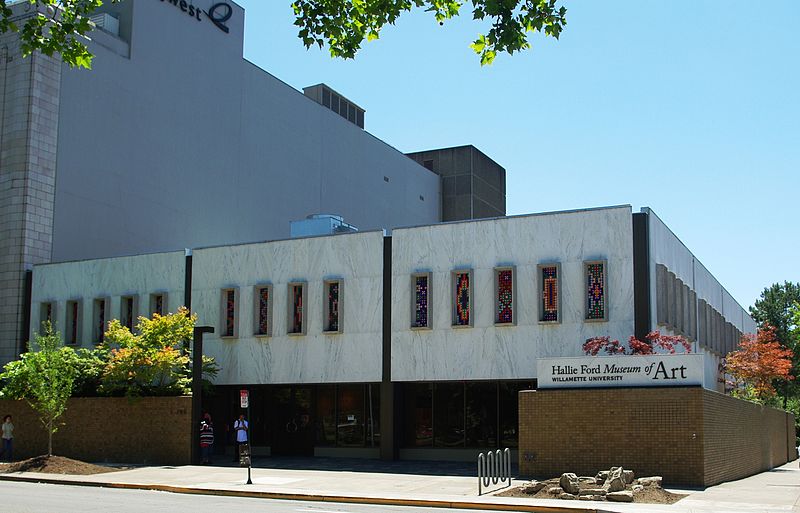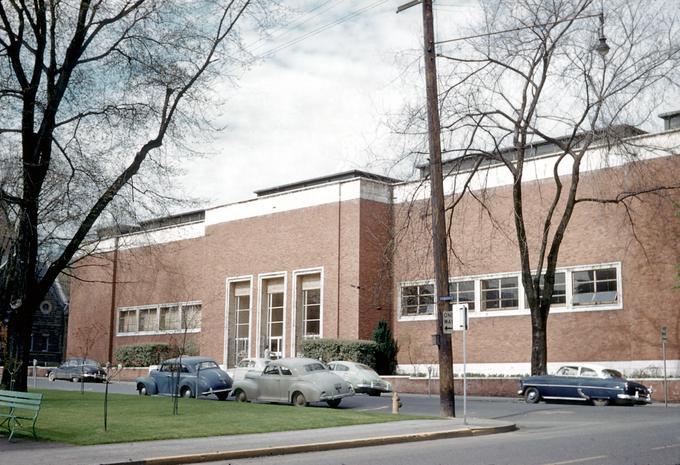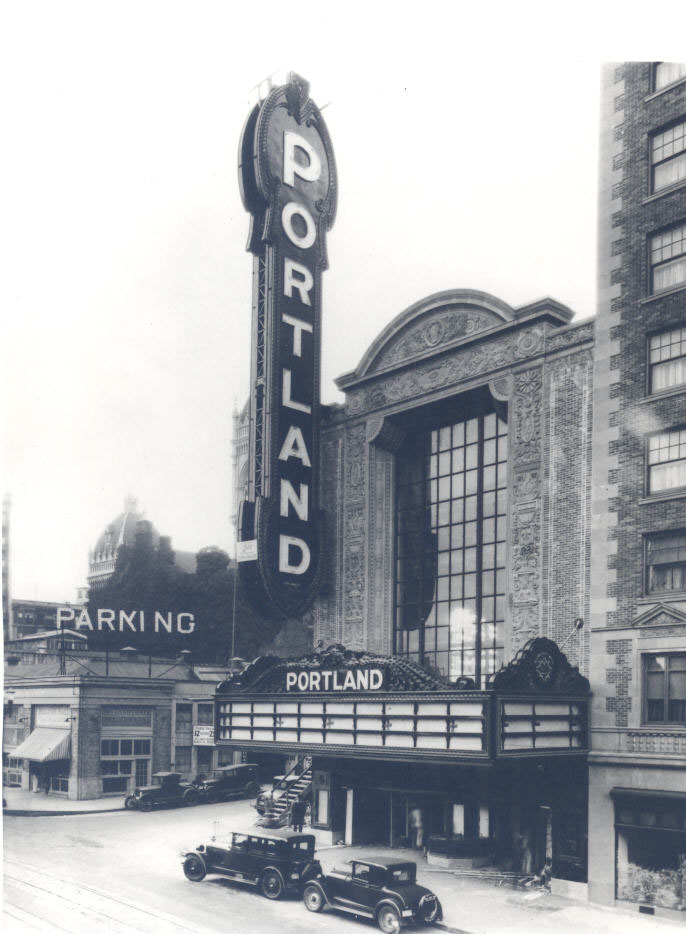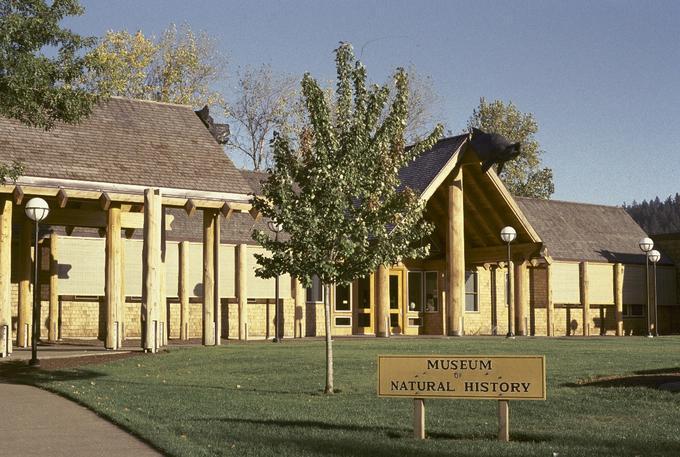The Jordan Schnitzer Museum of Art (JSMA), situated on the Memorial Quadrangle at the University of Oregon in Eugene, is the only academic art museum in the state to be accredited by the American Alliance of Museums. Its exhibitions and extensive collections continue the museum’s founding mission of bridging cultures and promoting international understanding through art.
Plans for the University of Oregon Museum of Art began in the 1920s with collector Gertrude Bass Warner’s arrival in Eugene. In 1904, Gertrude Bass moved to China, where she met and married Major Murray Warner in 1905. The couple maintained a home in Shanghai for several years and traveled extensively throughout Asia as they built their art collection. After Murray's death in 1920, Gertrude relocated to Eugene, where her son was teaching at the University of Oregon's School of Law. When university president Prince Lucien Campbell agreed to raise funds, Gertrude Bass Warner donated more than 3,700 works of traditional East Asian art for an academic museum, in memory of her husband. The project broke ground in the fall of 1929, and the museum opened to the public on June 10, 1933.
The building, with its intricate brickwork façade and decorative moldings, was designed by prominent Portland architect Ellis F. Lawrence, who had founded the University of Oregon’s School of Architecture and Allied Arts (now the College of Design) and served as its first dean. The building was added to the National Register of Historic Places in 1986. In the 1990s, the Chicago-based firm Hammond Beeby Rupert Aigne designed an expansion and renovation that allowed for additional space while maintaining Lawrence’s original vision. The project began in 2002, and the museum reopened as the Jordan Schnitzer Museum of Art in 2005, financed by a naming-gift from Portland-based collector Jordan Schnitzer.
Since Gertrude Warner’s founding gift, the collection has grown and now has more than fifteen thousand objects, with notable art from Asia, the Americas, and Europe. The Asian collection, which once consisted primarily of traditional East Asian objects, now includes examples of modern and contemporary works.
The collection of art from the Americas is chronologically, geographically, and materially diverse. It includes works by U.S. artists such as William Merritt Chase, Imogen Cunningham, Helen Frankenthaler, Ellsworth Kelly, Louise Nevelson, Robert Rauschenberg, Peter Voulkos, and Andy Warhol. Collecting works from Latin American and the Caribbean began in 2008 with the arrival of Executive Director Jill Hartz, who had an interest in Latin American art and in contemporary Cuban art in particular.
Due to the efforts of collector Virginia Haseltine, the JSMA’s holdings are particularly strong in Northwest regional art. Enthralled by an article in Life magazine on the mystic painters of the Northwest—Guy Anderson, Kenneth Callahan, Morris Graves, and Mark Tobey—Haseltine began collecting works by contemporary regional artists. By the early 1960s, she had amassed a collection of several hundred pieces. Throughout the 1970s and 1980s, Haseltine gifted many of these works to the museum and established an endowment to provide support for its Northwest collection. In addition to having works by such notable artists as Charles Heaney, Hilda Morris, C.S. Price, and Mark Tobey, the museum has the largest public collection of works on paper by Morris Graves. The museum also manages the extensive McCosh Memorial Collection, which includes nearly two thousand paintings, drawings, and sketches by Oregon artists David McCosh and Anne Kutka McCosh.
Selections from the European collection, which range from ancient Roman busts and medieval manuscript pages to modern and contemporary work, are regularly rotated in the galleries. The collection includes a monumental painting by Hungarian artist Artur von Ferraris, a double-sided painting by German expressionist Max Pechstein, and a significant number of Russian icons and lacquer boxes.
The museum has had a strong history of leadership and support by women. Gertrude Warner was the first director and curator, and many of the museum’s early curators included Lucy Perkins, Emily Potter, and Maude Kerns. In the twenty-first century, the curatorial team is comprised of collectors such as Margo Grant Walsh, Virginia Haseltine, Yoko Matsuoko McClain, and Arlene Schnitzer, who have profoundly shaped the collection.
From its earliest years, University of Oregon classes have been offered in the museum, and thousands of students visit the museum each year as part of their coursework in art, art history, and museum studies. In addition, students from dozens of departments as varied as anthropology, biology, environmental science, and language arts regularly attend class at the museum. Since 2009, the Gertrude Bass Warner Award has recognized individuals for outstanding public service to the museum and its mission.
-
![]()
Jordan Schnitzer Museum of Art (then the U.O. Museum of Art), Eugene.
Courtesy University of Oregon Libraries
-
![]()
Jordan Schnitzer Museum of Art (then the U.O. Museum of Art), Eugene.
Courtesy Gertrude Bass Warner (1863-1951) photographs, University of Oregon. "PH014_b090_053 Gertrude Bass Warner photographs" Oregon Digital -
![]()
Jordan Schnitzer Museum of Art (then the U.O. Museum of Art), Eugene.
Courtesy University of Oregon Libraries -
![]()
Jordan Schnitzer Museum of Art (then the U.O. Museum of Art), Eugene.
Courtesy University of Oregon Libraries
-
![]()
Gertrude Bass Murray.
Oregon Historical Society Research Library, Journal, 018449
Related Entries
-
![Gertrude Bass Warner (1863-1951)]()
Gertrude Bass Warner (1863-1951)
Gertrude Bass Warner was a world traveler, art collector, museum specia…
-
Hallie Ford Museum of Art
The Hallie Ford Museum of Art at Willamette University has only been in…
-
![Portland Art Museum]()
Portland Art Museum
The Portland Art Museum, which opened in 1895 in the city library with …
-
![Portland Paramount Theatre/Arlene Schnitzer Concert Hall]()
Portland Paramount Theatre/Arlene Schnitzer Concert Hall
The Portland Paramount Theatre once dominated the city’s Great White Wa…
-
![Schneider Museum of Art]()
Schneider Museum of Art
The Schneider Museum of Art at Southern Oregon University in Ashland op…
-
![University of Oregon Museum of Natural and Cultural History]()
University of Oregon Museum of Natural and Cultural History
Located in Eugene on the University of Oregon (UO) campus, the Museum o…
Map This on the Oregon History WayFinder
The Oregon History Wayfinder is an interactive map that identifies significant places, people, and events in Oregon history.
Further Reading
Fong, Lawrence M., et al, Precious Cargo: The Legacy of Gertrude Bass Warner. Eugene, OR: University of Oregon, 1997.
Gertrude Bass Warner papers, 1879-1954, University of Oregon Special Collections & University Archives.
Hartz, Jill, et al, Lasting Legacies, the First 75 Years: Selections from the Collection of the Jordan Schnitzer Museum of Art. Eugene, OR: University of Oregon, 2009.
Kitagawa, Anne Rose, et al, Expanding Frontiers: The Jack and Susy Wadsworth Collection of Postwar Japanese Prints. Eugene, OR: University of Oregon, 2009.
Koehler, June Irene and Megan Lallier-Barron. Through Her Lens: Gertrude Bass Warner’s Vision of Asia. Eugene, OR: Jordan Schnitzer Museum of Art, 2013.
Richard, Keith. “The Stormy Birth of a Museum,” Old Oregon (Summer 1982): 13-17.











